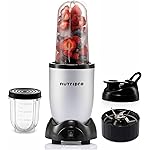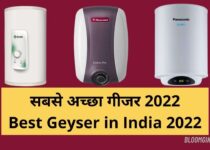Plumbing Materials Name List: Unveiling the A to Z of Plumbing
Table of Contents
Plumbing Materials Name List: Unveiling the A to Z of Plumbing Material
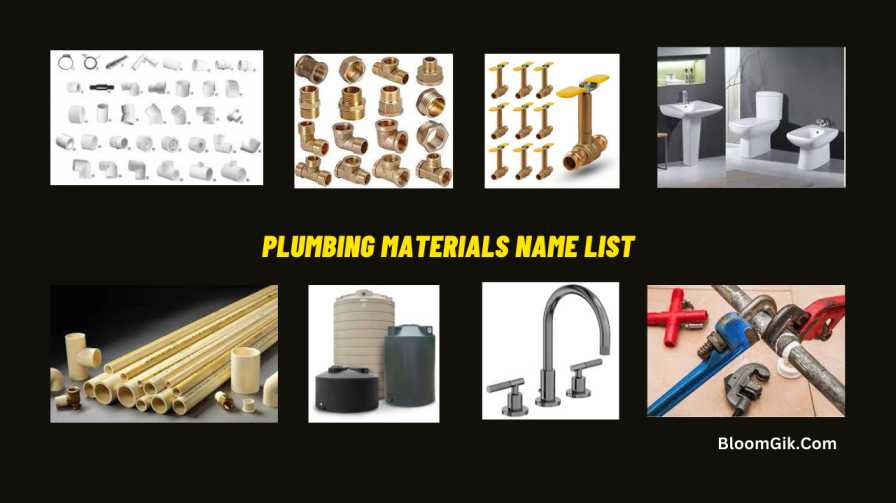
When it comes to plumbing, having a clear understanding of the materials and components used in the field is crucial. From pipes and fittings to valves and water heaters, the diverse range of plumbing materials plays a fundamental role in ensuring the functionality and efficiency of our water and sanitation systems. In this article, we present an exhaustive A to Z plumbing materials name list, providing insight into their applications, advantages, and potential drawbacks.
A Comprehensive Plumbing Materials Name List – A to Z List
We have placed Amazon links of all the items for your convenience so that you can easily buy them from Amazon. We’ve only given them links to items you can buy from Amazon. Also you can visit your nearest hardware store for any item.
Pipes and Tubing:
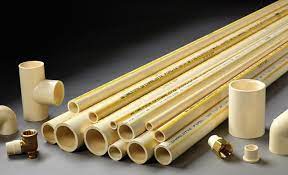
| Material | Application | Advantages | Disadvantages |
|---|---|---|---|
| PVC Pipes | Water supply | Lightweight, corrosion-resistant | Not suitable for hot water |
| CPVC Pipes | Hot water systems | Higher temperature resistance | More expensive than PVC |
| UPVC Pipes | Water distribution | Durable, low maintenance | Limited flexibility |
| PPR Pipes | Plumbing systems | High-temperature resistance | Requires special tools for fittings |
| GI Pipes | Water supply, gas lines | Corrosion-resistant, sturdy | Prone to rust and scaling |
| MS Pipes | General use | Affordable, versatile | Susceptible to corrosion |
| Copper Pipes | Water supply, heating | Excellent corrosion resistance | Expensive, can be stolen |
| Stainless Steel Pipes | Various applications | Extremely durable, corrosion-proof | Costly, difficult to work with |
Fittings:

| Fittings | Usage | Advantages | Disadvantages |
|---|---|---|---|
| Elbows | Change direction | Easy installation, space-saving | Flow resistance |
| Tees | Branch connections | Versatile, creates multiple lines | Pressure drop |
| Couplings | Connect two pipes | Simple and quick fitting | Can leak if not properly secured |
| Unions | Easy disconnection | Convenient for maintenance | Bulkier compared to other fittings |
| Adapters | Different sizes | Compatibility for various pipes | Potential leakage |
| Nipples | Short extensions | Compact, used for tight spaces | Limited flexibility |
| Reducers | Size transitions | Allows smooth flow transition | Pressure loss |
| Caps | Seal pipe end | Protects against debris, insects | Limited use for pressure control |
| Flanges | Pipe connections | Strong, easy to assemble | Requires precise alignment |
Valves:

| Valves | Usage | Advantages | Disadvantages |
|---|---|---|---|
| Ball Valves | On/off control | Quick operation, reliable | May leak in partially open position |
| Gate Valves | Full flow or shut-off | Low pressure drop, tight seal | Slow operation |
| Globe Valves | Flow regulation | Precise control, minimal leakage | Pressure drop, higher cost |
| Check Valves | Prevent backflow | Automatic, low maintenance | Limited to specific flow direction |
| Butterfly Valves | Large flow control | Quick operation, space-saving | Leakage in high-pressure systems |
| Angle Valves | Change direction | Compact design, multiple sizes | Pressure drop, limited use |
| Pressure Relief Valves | Pressure protection | Prevents overpressure, safety | Regular maintenance needed |
Next item in the Plumbing Materials Name List is joints and connectors.
Joints and Connectors:
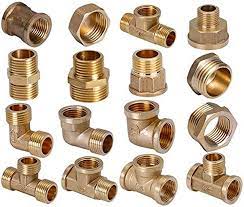
| Joints and Connectors | Usage | Advantages | Disadvantages |
|---|---|---|---|
| Compression Fittings | Leak-free connections | Easy to install, reusable | Limited to specific pipes |
| Soldered Joints | Copper pipe joining | Strong bond, no external parts | Requires heat, skill |
| Threaded Joints | General connections | Simple assembly, versatile | Prone to leaks, maintenance |
| Push-Fit Connectors | Quick connections | No tools required, reusable | Limited to certain pipes |
| Flared Joints | Tubing connections | Strong seal, resistant to leaks | Requires precision flaring |
Sealing and Tapes:
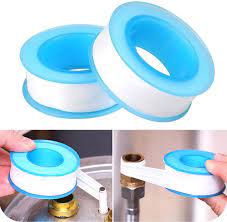
| Sealing and Tapes | Usage | Advantages | Disadvantages |
|---|---|---|---|
| Teflon Tape (PTFE Tape) | Thread sealant | Easy to apply, prevents leaks | Not suitable for all pipes |
| Pipe Thread Sealant | Thread sealant | Strong seal, versatile | Can be messy |
| Gaskets and O-rings | Sealing connections | Reliable, effective seal | Need replacement over time |
Drainage Systems:
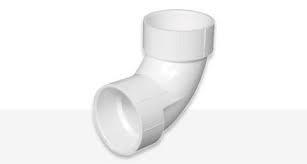
| Drainage Systems | Usage | Advantages | Disadvantages |
|---|---|---|---|
| PVC Drainage Pipes | Wastewater disposal | Corrosion-resistant, durable | Limited temperature range |
| Traps | Prevent sewer gases | Stops odors, prevents backflow | Requires regular cleaning |
| Floor Drains | Drainage in floors | Prevents water accumulation | Can clog over time |
| Roof Drains | Drainage from roofs | Redirects rainwater, prevents clogs | Requires maintenance |
| Drain Covers | Covering drains | Prevents debris from entering | Needs periodic cleaning |
Pumps:
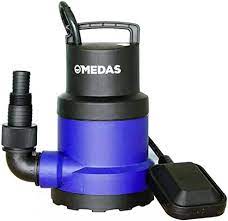
| Pumps | Usage | Advantages | Disadvantages |
|---|---|---|---|
| Submersible Pumps | Underwater pumping | Space-saving, efficient | Maintenance can be complex |
| Centrifugal Pumps | Fluid transfer | Versatile, simple design | Pressure drop, efficiency |
| Booster Pumps | Increase pressure | Improved water flow, convenient | Energy consumption |
Water Heaters:
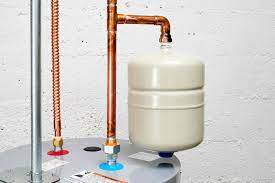
| Water Heaters | Usage | Advantages | Disadvantages |
|---|---|---|---|
| Storage Water Heaters | Stored hot water | Continuous supply, simple use | Limited hot water capacity |
| Instant Water Heaters (Tankless) | On-demand hot water | Energy-efficient, compact design | Limited flow rate, cost |
Water Storage Tanks:
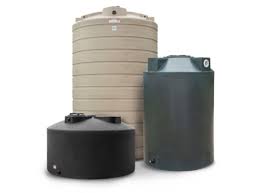
| Water Storage Tanks | Usage | Advantages | Disadvantages |
|---|---|---|---|
| Plastic Water Tanks | Water storage | Lightweight, durable | May degrade over time |
| PVC Water Tanks | Water storage | Resistant to corrosion, leaks | Can be expensive |
| Stainless Steel Tanks | Water storage | Long-lasting, corrosion-proof | Higher cost, weight |
Accessories:
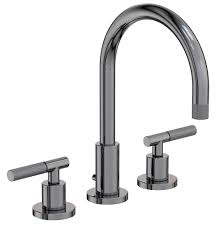
| Accessories | Usage | Advantages | Disadvantages |
|---|---|---|---|
| Faucets (Taps) | Water control | Easy operation, various styles | Prone to leaks over time |
| Showerheads | Shower control | Adjustable settings, water-saving | Mineral buildup |
| Pipe Hangers and Supports | Pipe support | Prevents sagging, secure | Can cause friction, noise |
| Pipe Insulation | Thermal protection | Energy efficiency, prevents condensation | Bulky appearance |
| Pipe Cutters | Pipe cutting | Precise cuts, various types | Regular blade replacement |
| Wrenches (Adjustable, Pipe, Basin) | Fastening bolts, nuts | Versatile, easy to use | Limited to specific tasks |
| Plungers | Unclogging drains | Simple, effective | May not work for all clogs |
Next item in the Plumbing Materials Name List is sinks and basins.
Sinks and Basins:
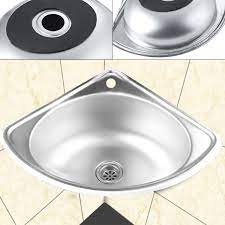
| Sinks and Basins | Usage | Advantages | Disadvantages |
|---|---|---|---|
| Kitchen Sinks | Food preparation | Convenient, functional design | Susceptible to scratches, stains |
| Bathroom Basins | Personal hygiene | Various styles, easy to clean | Limited sink space |
Toilets and Sanitary Ware:
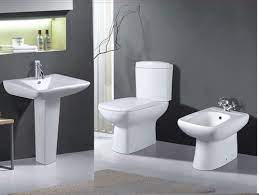
| Toilets and Sanitary Ware | Usage | Advantages | Disadvantages |
|---|---|---|---|
| Western Toilets | Sitting toilets | Comfortable, modern design | More water consumption |
| Indian Toilets (Squat Toilets) | Squatting toilets | Natural posture, hygiene | Unfamiliar for some users |
| Bidets | Personal hygiene | Cleansing, reduced toilet paper use | Additional plumbing |
| Urinals | Public restrooms | Space-saving, efficient | Limited to male use |
Plumbing Tools:
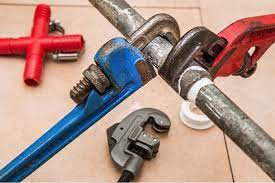
| Plumbing Tools | Usage | Advantages | Disadvantages |
|---|---|---|---|
| Pipe Cutters | Pipe cutting | Clean cuts, various types | Requires replacement blades |
| Pipe Wrenches | Pipe fastening | Secure grip, adjustable | Can damage soft materials |
| Pliers | Gripping, twisting | Versatile, easy to use | Not suitable for heavy tasks |
| Hacksaws | Cutting pipes | Fine cuts, replaceable blades | Slower than powered tools |
| Pipe Benders | Pipe shaping | Accurate bends, various sizes | Limited to specific pipes |
Septic Systems:
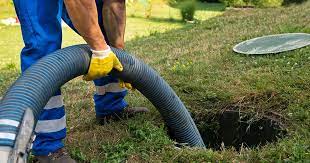
| Septic Systems | Usage | Advantages | Disadvantages |
|---|---|---|---|
| Septic Tanks | Wastewater treatment | Effective treatment, low maintenance | Regular pumping required |
| Drainage Fields | Wastewater disposal | Natural filtration, eco-friendly | Requires proper maintenance |
Water Treatment and Filtration:
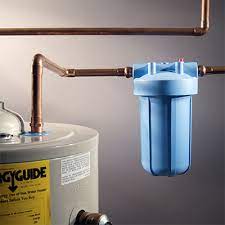
| Water Treatment and Filtration | Usage | Advantages | Disadvantages |
|---|---|---|---|
| Water Purifiers | Clean water | Removes contaminants, improves taste | Regular filter replacement |
| Water Softeners | Reduce hardness | Protects appliances, reduces scale | Requires salt regeneration |
A to Z Plumbing Materials Name List : Your Guide to Essential Components
Pipes and Tubing: Building the Plumbing Foundation
Pipes and tubing are the backbone of any plumbing system, serving as the conduits that facilitate the movement of water within buildings. Understanding the different types of pipes and tubing available is crucial for designing an efficient and reliable plumbing system. Here are some of the common options:
- PVC Pipes (Polyvinyl Chloride): PVC pipes are widely used for their lightweight and corrosion-resistant properties. They are commonly employed in both water supply and drainage systems due to their durability and cost-effectiveness.
- CPVC Pipes (Chlorinated Polyvinyl Chloride): CPVC pipes are known for their enhanced heat resistance compared to standard PVC pipes. This makes them suitable for hot water applications, such as in bathrooms and kitchens.
- UPVC Pipes (Unplasticized PVC): UPVC pipes offer the benefits of PVC pipes without plasticizers, making them ideal for conveying cold water. They are commonly used for outdoor plumbing applications.
- PPR Pipes (Polypropylene Random): PPR pipes are known for their longevity and resistance to high temperatures. They are often used in hot and cold water supply systems, offering a balance between cost and performance.
- GI Pipes (Galvanized Iron): GI pipes are coated with zinc to prevent corrosion. They are commonly used in outdoor plumbing, such as for water supply to gardens or for rainwater harvesting.
- MS Pipes (Mild Steel): MS pipes are durable and sturdy, making them suitable for industrial plumbing applications where strength is a priority.
- Copper Pipes: Copper pipes are valued for their excellent heat conductivity and corrosion resistance. They are commonly used for hot water systems and indoor plumbing.
- Stainless Steel Pipes: Stainless steel pipes are highly durable and corrosion-resistant, making them suitable for various applications, both indoors and outdoors.
Each type of pipe has its own set of advantages and considerations, and the choice depends on factors such as intended use, location, and budget.
Fittings: Connecting and Directing Flow
Fittings are essential components that enable pipes and tubing to be connected, directed, and adapted according to the needs of the plumbing system. Here are some of the most common types of fittings:
- Elbows: Elbows are angled fittings used to change the direction of the pipeline. They come in various angles, such as 45 and 90 degrees, allowing pipes to navigate around obstacles or follow specific paths.
- Tees: Tees are fittings with three openings, forming a T shape. They are used to create branch connections in a plumbing system, allowing water to flow in multiple directions.
- Couplings: Couplings are used to join two pipes of the same diameter in a straight line. They provide a secure connection and are commonly used for repairs and extensions.
- Unions: Unions consist of two threaded pieces that can be easily assembled or disassembled. They are used for maintenance purposes and provide a way to disconnect pipes without cutting.
- Adapters: Adapters are fittings that allow pipes of different materials or sizes to be connected. They play a crucial role in creating a seamless transition between various components of the plumbing system.
- Nipples: Nipples are short pieces of pipe used to extend or connect fittings. They are often used in conjunction with other fittings to achieve the desired plumbing configuration.
- Reducers: Reducers are fittings that connect pipes of different diameters. They are used to transition between larger and smaller pipes and maintain a smooth flow.
- Caps: Caps are used to seal the end of a pipe, preventing the flow of water. They are commonly used in areas where future expansion or maintenance might be required.
- Flanges: Flanges are flat, circular discs with holes that allow pipes to be bolted together. They are commonly used in conjunction with valves or equipment that requires easy access or removal.
Understanding the purpose and function of each type of fitting is essential for creating a plumbing system that efficiently directs water flow while accommodating the specific layout and requirements of the building.
Next item in the Plumbing Materials Name List is valves. Let’s know about them.
Valves: Regulating and Controlling Flow
Valves are essential for controlling the flow of water within a plumbing system. They enable users to start, stop, or regulate the flow of water through pipes. Here are some common types of valves and their applications:
- Ball Valves: Ball valves feature a spherical disc (the ball) inside the valve body. When the handle is turned, the ball rotates to control the flow of water. Ball valves are known for their quick and reliable shut-off capabilities.
- Gate Valves: Gate valves control flow by raising or lowering a gate-like barrier inside the valve body. They provide precise flow regulation but are not suitable for quick shut-off due to their design.
- Globe Valves: Globe valves use a disk and stem mechanism to regulate flow. They are commonly used for throttling or controlling flow in situations where precise adjustments are needed.
- Check Valves: Check valves are designed to allow water flow in one direction only, preventing backflow. They are commonly used in situations where backflow could contaminate the supply.
- Butterfly Valves: Butterfly valves feature a disc that rotates within the valve body to control flow. They are lightweight and are often used in large-diameter pipes.
- Angle Valves: Angle valves are commonly used for connecting faucets, toilets, and other fixtures. They have an L-shaped body and are ideal for tight spaces.
- Pressure Relief Valves: Pressure relief valves are crucial for preventing excessive pressure buildup within the plumbing system. They automatically release pressure when it exceeds a safe level.
Each type of valve serves a specific purpose within the plumbing system, contributing to the overall functionality and efficiency of water distribution and control.
Joints and Connectors: Bringing it All Together
Joints and connectors play a vital role in connecting pipes and ensuring a secure, leak-free plumbing system. Different methods are used to create these connections, each with its own benefits:
- Compression Fittings: Compression fittings consist of a nut and ferrule that tighten around the pipe, creating a seal without the need for soldering or threading. They are easy to install and disassemble.
- Soldered Joints: Soldered joints involve melting solder to join pipes and fittings. This method creates a strong and leak-free connection, commonly used for copper pipes.
- Threaded Joints: Threaded joints use threads on pipes and fittings to create a tight connection. They are commonly used for connecting galvanized iron pipes.
- Push-Fit Connectors: Push-fit connectors require no special tools or adhesives. They work by simply pushing the pipe into the connector, creating a secure and leak-free connection.
- Flared Joints: Flared joints are often used in gas lines. They involve flaring the end of a pipe and using a nut to secure it to a fitting, creating a reliable seal.
Understanding the appropriate jointing method for each type of pipe and situation is essential for creating a plumbing system that is not only leak-free but also efficient in terms of installation and maintenance.
Sealing and Tapes: Keeping Things Watertight
Sealing materials and tapes are essential for preventing leaks and ensuring a watertight plumbing system. Properly sealed connections are crucial for maintaining the integrity of the plumbing system:
- Teflon Tape (PTFE Tape): Teflon tape, also known as PTFE tape, is a thin tape wrapped around threaded connections. It fills gaps and creates a tight seal, preventing leaks in threaded joints.
- Pipe Thread Sealant (Pipe Dope): Pipe thread sealant, commonly referred to as pipe dope, is a paste applied to threaded connections before assembly. It enhances the seal and prevents leaks.
- Gaskets and O-rings: Gaskets and O-rings are used in various fittings to create a secure and watertight seal. They are commonly used in flanges, valves, and other fittings.
Drainage Systems: Removing Waste Water
Drainage systems are responsible for removing waste water from buildings, ensuring proper hygiene and sanitation. Here are some components commonly used in drainage systems:
- PVC Drainage Pipes: PVC drainage pipes efficiently remove waste water from sinks, showers, and other fixtures. They are corrosion-resistant and durable.
- Traps: Traps are curved sections of pipe that hold a small amount of water to create a water seal. This seal prevents sewer gases from entering the building while allowing waste water to flow.
- Floor Drains: Floor drains are installed in areas where water accumulation is common, such as bathrooms, laundry rooms, and basements. They prevent flooding by quickly draining excess water.
- Roof Drains: Roof drains are installed on roofs to prevent water accumulation and leaks. They direct rainwater away from the roof, reducing the risk of damage.
- Drain Covers: Drain covers prevent debris and objects from entering the plumbing system, reducing the risk of clogs and blockages.
Pumps: Moving Water Efficiently
Pumps are used to move water from one location to another within a plumbing system. They are essential for ensuring adequate water pressure and efficient water distribution. Here are some types of pumps commonly used in plumbing:
- Submersible Pumps: Submersible pumps are placed in water sources, such as wells or sumps. They are designed to operate underwater and are commonly used for deep water sources.
- Centrifugal Pumps: Centrifugal pumps use a rotating impeller to create centrifugal force, which propels water through the pump and into the plumbing system.
- Booster Pumps: Booster pumps increase water pressure in the plumbing system, ensuring consistent water flow to various fixtures, even in multi-story buildings.
Water Heaters: Providing Warmth on Demand
Water heaters play a crucial role in providing hot water for various household tasks, including bathing and cooking. Here are some types of water heaters commonly used in plumbing systems:
- Storage Water Heaters: Storage water heaters store a supply of hot water in a tank, making it available for use whenever needed. They are commonly found in residential settings.
- Instant Water Heaters (Tankless): Tankless water heaters heat water on demand, eliminating the need for a storage tank. They are energy-efficient and provide hot water without the risk of running out.
Next item in the Plumbing Materials Name List is water storage. Let’s know about them.
Water Storage Tanks: Storing the Essentials
Water storage tanks are used to store water for various purposes, including backup supply and rainwater harvesting. Here are some types of water storage tanks commonly used in plumbing systems:
- Plastic Water Tanks: Plastic water tanks are lightweight, durable, and easy to install. They are commonly used for residential water storage.
- PVC Water Tanks: PVC water tanks are similar to plastic tanks but are made from polyvinyl chloride. They are commonly used for rainwater harvesting and storage.
- Stainless Steel Water Tanks: Stainless steel water tanks are known for their durability and corrosion resistance. They are commonly used in industrial and commercial settings.
Accessories: Enhancing Functionality
Plumbing accessories are the finishing touches that enhance the functionality and convenience of a plumbing system. Here are some common plumbing accessories:
- Faucets (Taps): Faucets, also known as taps, control the flow of water from pipes to fixtures. They come in various styles and designs to suit different needs.
- Showerheads: Showerheads deliver water in a controlled spray pattern for bathing. They come in various designs, including adjustable and handheld options.
- Pipe Hangers and Supports: Pipe hangers and supports secure pipes in place, preventing them from sagging or moving. Proper support is crucial for maintaining the integrity of the plumbing system.
- Pipe Insulation: Pipe insulation helps prevent heat loss from hot water pipes and prevents condensation on cold water pipes. This insulation improves energy efficiency and prevents damage.
- Pipe Cutters: Pipe cutters are tools used to cut pipes to the desired length. They provide clean and precise cuts, ensuring proper pipe installation.
- Wrenches (Adjustable, Pipe, Basin): Wrenches are used for tightening and loosening fittings and connections. Adjustable wrenches, pipe wrenches, and basin wrenches are commonly used in plumbing.
- Plungers: Plungers are used to clear clogs in drains and toilets. They create pressure that dislodges blockages, restoring proper water flow.
Sinks and Basins: Functional Fixtures
Sinks and basins are essential fixtures in bathrooms and kitchens, providing spaces for tasks such as washing hands, dishes, and food. Here are some common types of sinks and basins:
- Kitchen Sinks: Kitchen sinks are designed to accommodate tasks such as washing dishes and preparing food. They come in various sizes, materials, and configurations.
- Bathroom Basins: Bathroom basins, also known as sinks, are used for personal hygiene tasks such as washing hands and brushing teeth. They come in a range of designs to suit different aesthetics.
Toilets and Sanitary Ware: Ensuring Cleanliness and Comfort
Toilets and sanitary ware are essential fixtures that provide sanitation and comfort in bathrooms. Here are some common types of toilets and sanitary ware:
- Western Toilets: Western toilets, also known as sit-down toilets, are designed for comfortable sitting. They are common in many parts of the world.
- Indian Toilets (Squat Toilets): Indian toilets, also known as squat toilets, involve squatting rather than sitting. They are prevalent in certain regions and cultures.
- Bidets: Bidets are fixtures used for personal hygiene after using the toilet. They provide a gentle stream of water for cleaning.
- Urinals: Urinals are fixtures used for urination. They are commonly found in public restrooms and are designed for easy use and maintenance.
Next item in the Plumbing Materials Name List is plumbing tools. Let’s know about them.
Plumbing Tools: Essential Aids for Installation and Maintenance
Plumbing tools are essential for installing, maintaining, and repairing plumbing systems. Here are some common types of plumbing tools:
- Pipe Cutters: Pipe cutters are used to cut pipes to the desired length, ensuring a clean and precise cut.
- Pipe Wrenches: Pipe wrenches are adjustable wrenches used for tightening and loosening pipes and fittings.
- Pliers: Pliers are versatile tools used for gripping, bending, and manipulating pipes, fittings, and other components.
- Hacksaws: Hacksaws are used for cutting through pipes and other materials. They have a fine-toothed blade for accurate cuts.
- Pipe Benders: Pipe benders are used to bend pipes at specific angles, allowing for the creation of customized plumbing configurations.
Septic Systems: Managing Waste
Septic systems are used in areas without access to public sewage systems. They manage waste through a combination of tanks and drainage fields:
- Septic Tanks: Septic tanks collect and store waste from toilets and drains. The waste undergoes natural decomposition, and the treated effluent is then released into a drainage field.
- Drainage Fields: Drainage fields, also known as leach fields, disperse treated effluent from septic tanks into the soil. The soil further filters and purifies the effluent.
Water Treatment and Filtration: Ensuring Clean Water
Water treatment and filtration systems are essential for ensuring clean and safe drinking water. Here are some common types of water treatment and filtration systems:
- Water Purifiers: Water purifiers remove contaminants and impurities from water, making it safe for drinking and other domestic uses.
- Water Softeners: Water softeners remove minerals such as calcium and magnesium, which can cause hardness in water. Softened water prevents scale buildup in pipes and fixtures.
By understanding and utilizing these various plumbing materials, components, and systems, you can create and maintain a plumbing infrastructure that meets the needs of both convenience and functionality in any building. Whether you’re building a new structure or renovating an existing one, choosing the right plumbing materials and components is essential for ensuring a reliable and efficient plumbing system.
Conclusion
In conclusion, the world of plumbing materials is diverse and essential for maintaining our modern lifestyles. This comprehensive Plumbing Materials Name List provides insight into the components that keep our water and sanitation systems functioning effectively. From pipes and fittings to valves and pumps, each material serves a specific purpose in the intricate network of plumbing infrastructure. Whether you’re a homeowner or a professional plumber, understanding these materials is crucial for building, repairing, and maintaining plumbing systems that stand the test of time.
